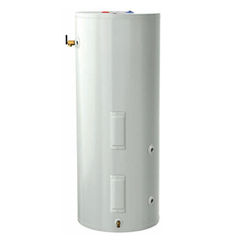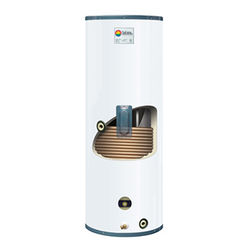Solar Water Heater Tanks
Solar Storage Tanks
SunEarth offers both single wall and double wall indirect solar storage tank options that when combined with our direct solar storage tank means that no matter your solar storage tank needs SunEarth offers the right solution. Our double wall indirect tanks incorporate a vented external heat exchanger whereas our single wall indirect tanks utilize an internal heat exchanger.
Do Solar Heaters Work in Varying Weather?
Both of these options are designed for all climates which are subjected to annual mild-hard freeze conditions. Our indirect heat exchange tanks are the right choice for SunEarth’s ICC-SRCC OG-300 approved SolaRay, SolaRay 2 and Cascade system options.
Our direct tank is the ideal choice for climates that do not experience freeze conditions. This is the tank that should be chosen for our ICC-SRCC OG-300 approved SunSaver system. Alternatively, it is can be paired with an external heat exchanger to meet the needs of any environment and should be utilized in SunEarth’s ICC-SRCC OG-300 approved Cascade 2 system option.
How Do You Choose or Size a Solar Tank?
Assuming we start out with a tank near mains temperature after everyone has showered in the morning, there is a certain amount of energy required to bring the tank to the maximum of 160 F in the afternoon. If this energy comes from SunEarth panels with an average clear day output of 1,000 BTU/sq. ft. then the quantity of water that each square foot would raise from mains temperature to 160 F could be expressed as.
Vgal=120/(160-Tmains)
For most multi-family applications, however, the ratio is good practice and results in a good tradeoff between cost on the longevity of the system. For more information on how to choose a solar water heater, visit our design resources page.

Single Wall Heat Exchange Tanks (HX)
SunEarth Single Wall Heat Exchange Tank are available in 80 and 120 Gallon Models
Learn More
Double Wall Heat Exchange Tank (HE)
SunEarth Double Wall Heat Exchange Solar Tank are available in 80 and 120 Gallon Models
Learn More
Solar Heat Exchanger Tank Dip Tubes
What is a Dip Tube?
A “Dip Tube” is a pipe that is constructed in such a way to allow cold water to flow from the entrance at the top of a solar storage tank to the bottom of the storage tank where the rest of the cold water is located. The dip tube carries the cold water to the bottom of the tank, and this action will push up the hot water up to the top of the tank.
How is a Dip Tube used?
Heat exchange tanks have a dip tube running through the center of the storage tank. This dip tube is incorporated in every storage tank to direct the cold water to the bottom of the tank. When the cold water flows to the bottom of the solar storage tank, it pushes up the hot water to the top of the tank.
What are the Different Types of Dip Tubes for Direct Open Loop Storage Tanks?
Direct open loop tanks have three different dip tubes:
- Cold Main Dip Tube
- Solar Return Dip Tube
- Solar Supply Dip Tube
The cold main dip tube goes all the way down to the bottom of the tank and allows cold water to flow to the bottom of the tank. The solar return dip tube is a shorter tube that is connected at the top of the tank. The solar supply dip tube is longer and allows for the water to be drawn by the pump up to draw from the cold water and take it up to the solar panels.

